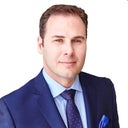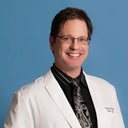Thank you for your post. There are a lot of variables to account for after breast augmentation and what to expect in the recovery process. Done well, breast augmentation can have a very long lasting beautiful result. The following is an outline of what to expect after augmentation based on some of these variables. In general, treat 'dual plane' augmentation as very similiar to 'sub-muscular' in the recovery process.1. Pain: In general, breast augmentation is tolerated very well. When the implant is placed sub-facial or sub-glandular, i.e. above the muscle, there is very little pain post-operative. The muscle is left in place and in general, when I perform this technique, women have surgery on Friday, and are back to work (as long as they are not lifting heavy objects) on Monday. When the implant is placed sub-muscular, then there more pain and soreness as the muscle has been elevated which is similiar to having a pulled or torn muscle. This creates more swelling and takes longer to heal. In these case, most women take at least a week off of work.2. Swelling and Size: It is very common to be about a size bigger right after surgery than what your final result will be. Swelling starts to occur right after surgery and tends to peak in the first week. After about a month you will have lost most of the swelling, but still not completely at baseline. After about another 3 months or so, you will have lost 99% of your swelling, but still have a pretty good idea of your final size at 1 month. I wouldn't spend a lot of money on bras until 3 months though, as they might not fit perfectly after all the swelling goes away. Also, the more activity you have, the longer the swelling stays, the more that needs to be done as far as lift etc. with surgery, the longer your swelling stays. As stated above, going below the muscle tends to produce more swelling and lasts for longer.3. Scars: The natural healing process undergoes multiple phases, but in general, the first phase is the inflamatory phase were any scar will be firmer and may turn red or darker initially. This tends to last for 3 months. After this phase is the resolution phase where the scar inflammation goes away and all scars will be at their baseline at 1 year. The scars are mostly at their baseline at 6 months. The scars should be minimal if placed well, and sutured properly. I also like to protect the scars from stretching or widening in the first few months with surgical skin tape. The incision will be weak at first and susceptible to stretch or widening.4. Massage: Your doctor may recommend early or late massage, depending on what is trying to be accomplished. In general, early massage is to manipulate a high implant or stretch a constricted area, such as in tubular breast syndrome, and late massage is to help fight capsular contraction. Search 'Breast Massage' to find my recommendations on this.5. Exercise: In general, I ask my patients to keep away from aerobic activities in the first 2 weeks following surgery. Increased activity can increase swelling and hyper-swelling can cause stretch marks. Following this, 'non-bouncing' aerobic activity is fine, such as speed walking or cycling, but would like to keep the implants from moving too much until the capsule that forms around the implant has a chance to heal and become stronger. At 6 weeks, I clear any type of activity.6. Infection: Infection after augmentation is very rare. Most surgeon give post-operative antibiotics to help protect you from infection.7. Hematoma/Seroma: These are also very rare after augmentation. If the pocket for the implant that is made during surgery is a hand in glove fit, then there is very little room for any fluid to collect. It is important that the surgical pocket be free of any bleeding prior to closure to keep a hematoma from happening. If a hematoma does occur, it is important to drain the hematoma to prevent capsular contraction.8. Sleeping: I ask women to sleep on their backs with their post-operative bra on after surgery to keep the implants in their proper position until the capsule that forms around the implant has a chance to heal.I hope this has answered most of your post-operative questions.Best Wishes,Pablo Prichard, MD




